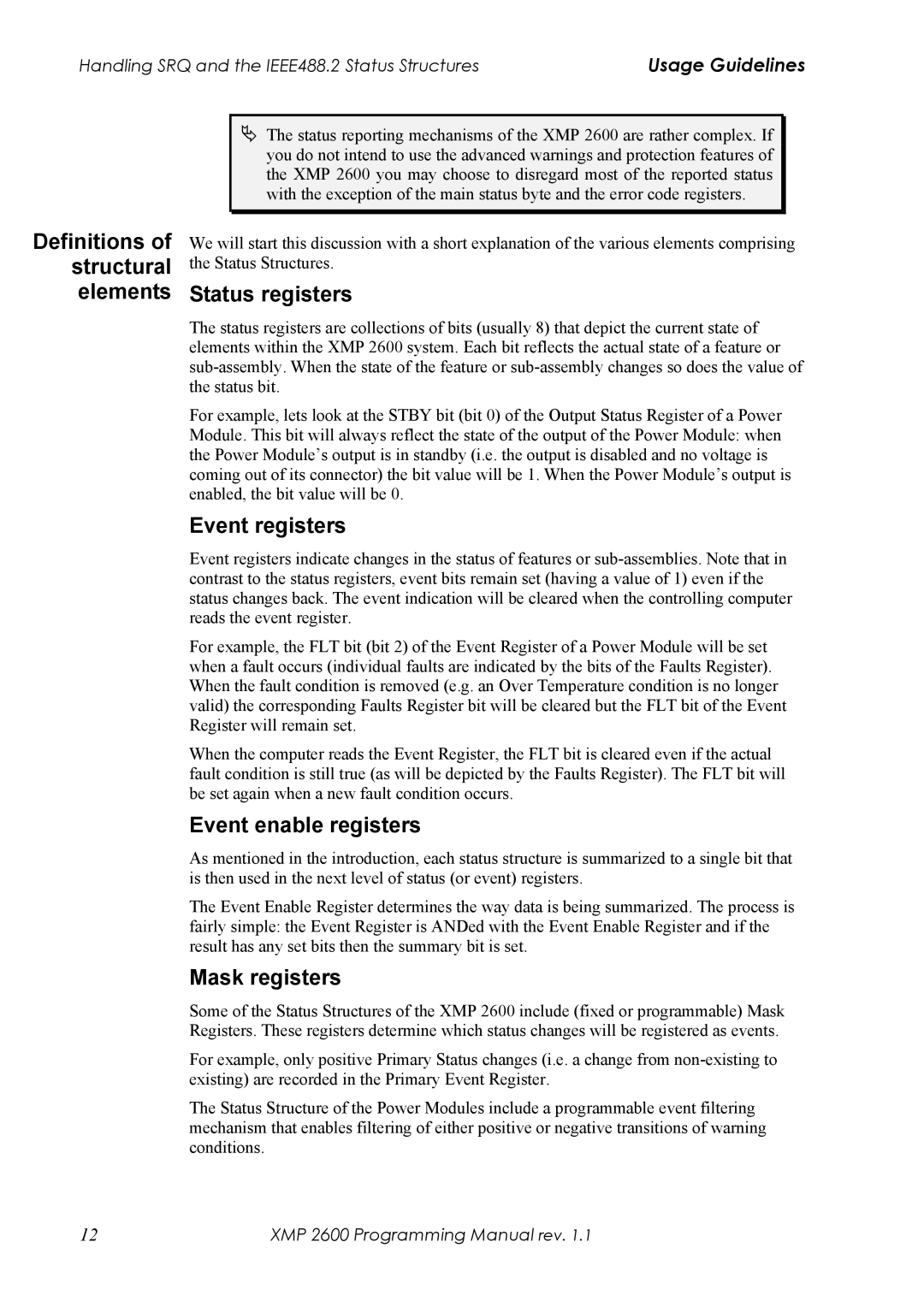
Handling SRQ and the IEEE488.2 Status Structures | Usage Guidelines |
Definitions of structural elements
The status reporting mechanisms of the XMP 2600 are rather complex. If you do not intend to use the advanced warnings and protection features of the XMP 2600 you may choose to disregard most of the reported status with the exception of the main status byte and the error code registers.
We will start this discussion with a short explanation of the various elements comprising the Status Structures.
Status registers
The status registers are collections of bits (usually 8) that depict the current state of elements within the XMP 2600 system. Each bit reflects the actual state of a feature or
For example, lets look at the STBY bit (bit 0) of the Output Status Register of a Power Module. This bit will always reflect the state of the output of the Power Module: when the Power Module’s output is in standby (i.e. the output is disabled and no voltage is coming out of its connector) the bit value will be 1. When the Power Module’s output is enabled, the bit value will be 0.
Event registers
Event registers indicate changes in the status of features or
For example, the FLT bit (bit 2) of the Event Register of a Power Module will be set when a fault occurs (individual faults are indicated by the bits of the Faults Register). When the fault condition is removed (e.g. an Over Temperature condition is no longer valid) the corresponding Faults Register bit will be cleared but the FLT bit of the Event Register will remain set.
When the computer reads the Event Register, the FLT bit is cleared even if the actual fault condition is still true (as will be depicted by the Faults Register). The FLT bit will be set again when a new fault condition occurs.
Event enable registers
As mentioned in the introduction, each status structure is summarized to a single bit that is then used in the next level of status (or event) registers.
The Event Enable Register determines the way data is being summarized. The process is fairly simple: the Event Register is ANDed with the Event Enable Register and if the result has any set bits then the summary bit is set.
Mask registers
Some of the Status Structures of the XMP 2600 include (fixed or programmable) Mask Registers. These registers determine which status changes will be registered as events.
For example, only positive Primary Status changes (i.e. a change from
The Status Structure of the Power Modules include a programmable event filtering mechanism that enables filtering of either positive or negative transitions of warning conditions.
12 | XMP 2600 Programming Manual rev. 1.1 |
